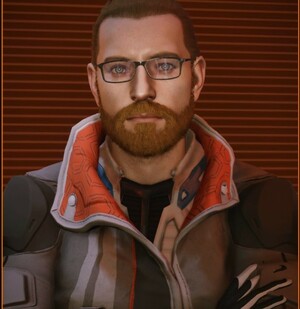Canonn Challenge Entry 4: Failed Training Mission to Arm's End
04 Dec 2020Scopelx
As an unapologetic explorer, I rarely return to the Bubble and never stay for long. Unfortunately, this means my contacts within engineering circles were rather limited. When I initially set out into the black, I had the best possible FSD available. But the remainder of the modules making up my trusty Krait Phantom, the Lord Sandwich II, were completely stock components. I owed this ship some time in drydock while investing in substantive enhancements. Over the course of several weeks I gathered materials, called in favors, and did all that I could to track down the few people capable of high-grade module modifications. When it was over, every aspect of my ship had been improved. The hull was strengthened, the thrusters were tuned, and every gram of unnecessary mass was stripped out to maximize possible jump range. All that remained was an adequate field test. But this ship had already taken me all over the galaxy, and never once failed me. What journey could I possibly take to test her newfound explorative capacity? I had recalled hearing that a fellow DSSA Carrier Commander, HeavyJohnson, had stationed his carrier at Arm's End, a distant system at the most remote edge of Xibalba. A trip to the Explorer's Bar and Grill was known to be arduous, requiring extensive manual route plotting and frequent use of range-boosting FSD injections. If attempting to reach any destination could strain my ship's capabilities, this would surely be the one?Regrettably, it was I who was unprepared for this journey, not my ship. This trek proved to be too much for me and forced me to learn a harsh lesson about the realities of exploration on the very fringes of the galaxy. A lesson that following a mapped route to Semotus Beacon on a previous expedition had failed to teach me. I grossly underestimated the amount of trial-and-error required in finding a viable route forward, and did not store sufficient materials for the necessary FSD injections. To avoid the risk of stranding myself on the return journey, I would need to stop and harvest more materials from local planets. This was time I simply did not have, as I am committed to an upcoming expedition launching from the Bubble in January. I will need to return to this area again with the benefit of experience and more resources. Lesson learned. The more positive news is that the Lord Sandwich II performed admirably, clearly benefitting from the efforts of many seasoned engineers. The following are a selection of the biological sites I scanned while attempting to traverse one of the most unforgiving patches of space in the galaxy.
Viride Gyre Trees
System: Eorgh Hypa RR-U c19-0

These gyre trees were some of the first humans ever encountered in the Kepler's Crest region. Their protuberances are notably thinner than those of the penduncle trees I had seen during my earlier voyage. Gyres are also considerably rarer, with only 16 populations having been discovered to date. I suspect this is due to the fact that gyres require the presence of at least one of a number of life-bearing worlds and a Class Y star in system in order to develop. Such planets are rarely, if ever, found in a Class Y primary system. Unlike amphoras where one could survey Class A primary systems and hope to hit upon the right conditions eventually, the Class Y star crucial to the growth of gyre trees would likely need to be either a secondary star or a moon. This makes efforts to selectively scan for systems where gyre trees might be found a monumentally more difficult undertaking.
Roseum Gyre Pods
System: Eorgh Hypa RR-U c19-0

To my great surprise, gyre pods appear to have evolved a defense against any attempt to disturb them. I noted a strange particulate cloud surrounding the pod upon initial inspection. When I entered this cloud trying to investigate more closely, alarms sounded as a corrosive substance bypassed my shields and ate away at my hull. The corrosion subsided quickly when I retreated to a safe distance, but the experience was harrowing to say the least. I utilized a research limpet to extract a tissue sample for further study.
